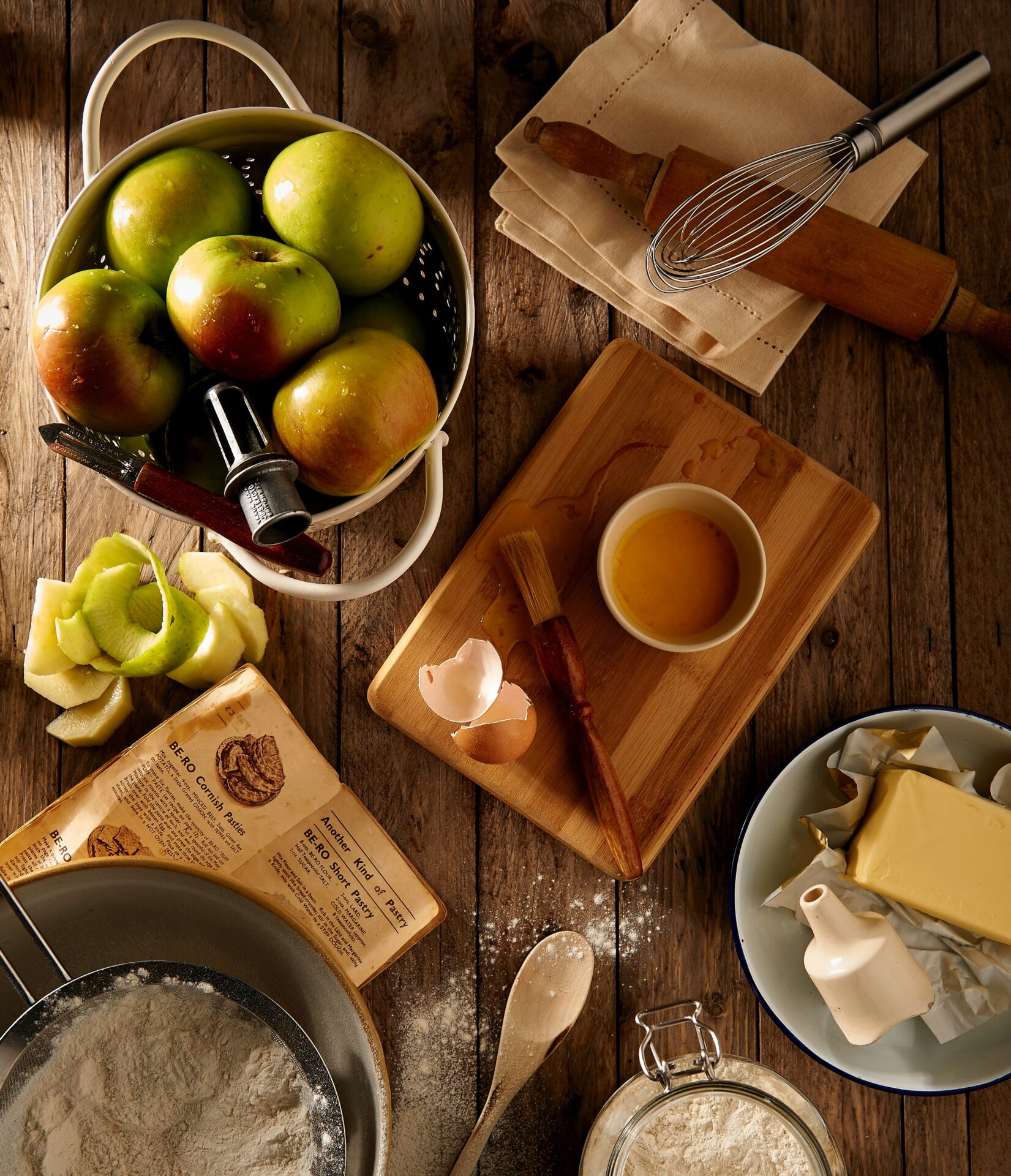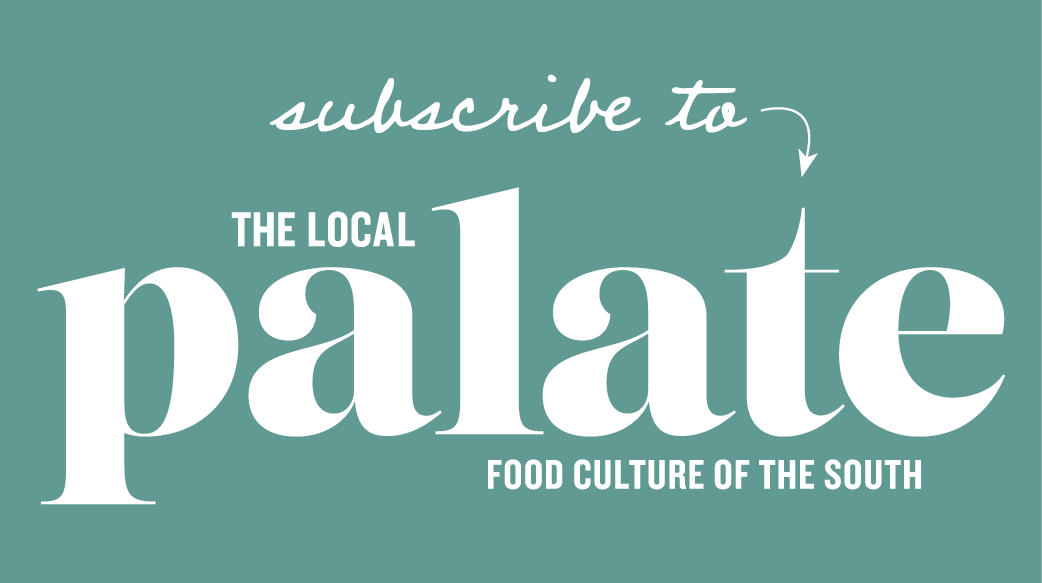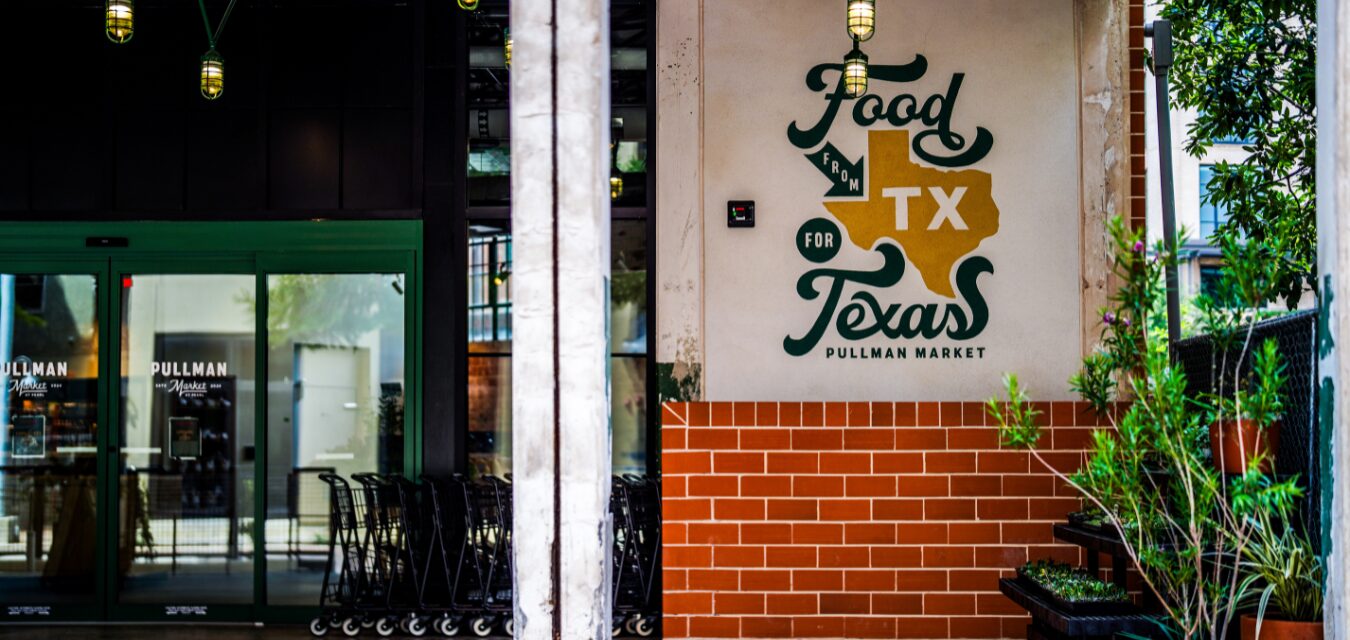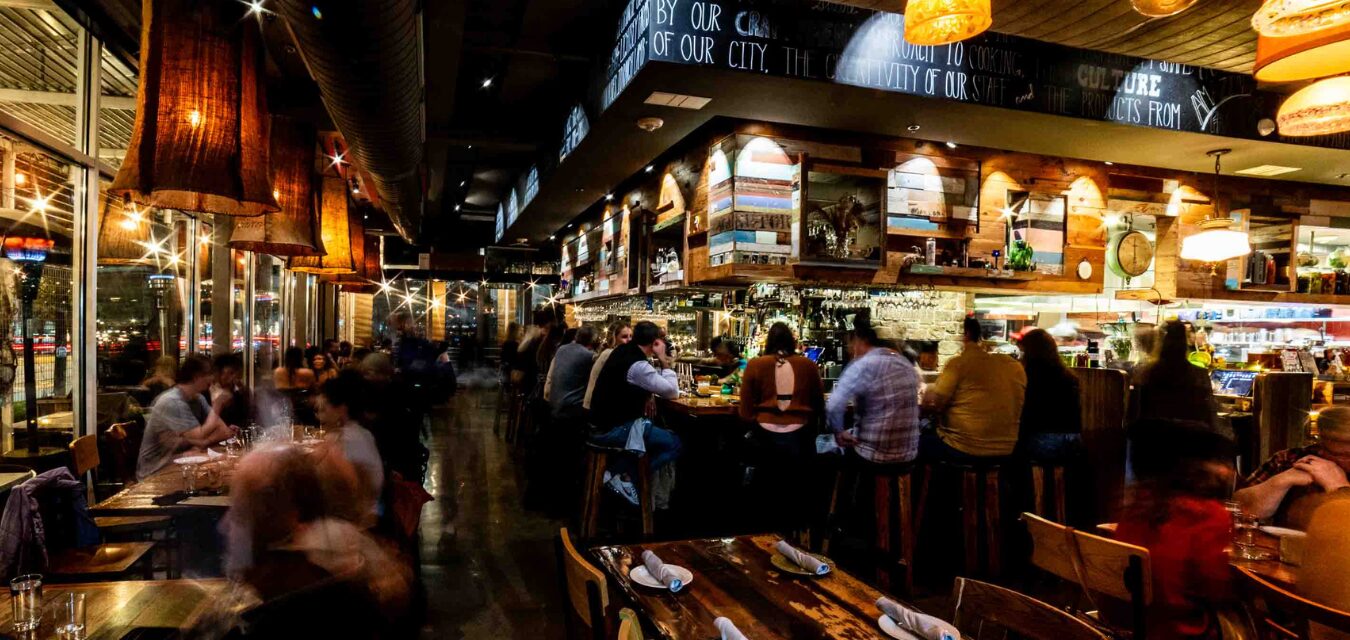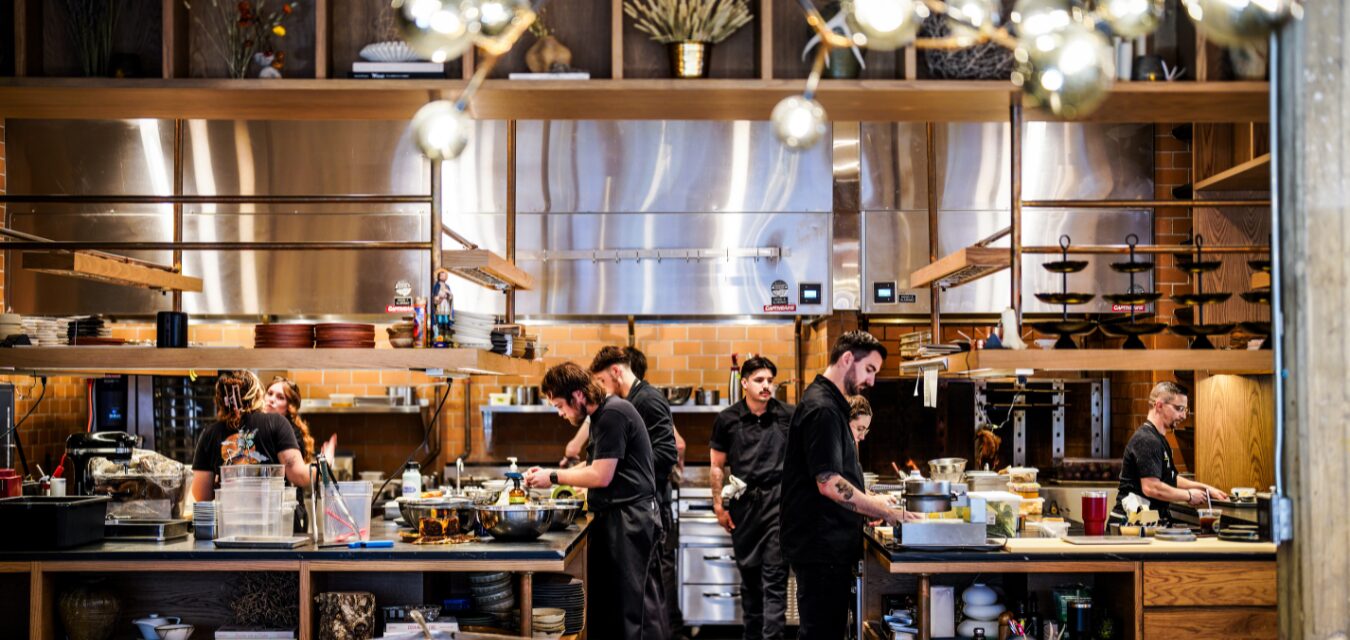By late summer in Texas, the farmer’s market tables are overflowing—plump tomatoes still warm from the sun, fragrant peaches that perfume the air, and peppers in every color from chartreuse to crimson. But if you’ve ever wished you could capture that same abundance on a Tuesday afternoon instead of waiting for the weekend, Pullman Market is the answer.

Housed in the historic Samuel’s Glass building at San Antonio’s Historic Pearl, Pullman is part grocery, part culinary playground, and all rooted in the hyperlocal ethos of chef-restaurateur Kevin Fink, founder of Emmer & Rye Hospitality. Inside, you’ll find produce from more than 200 Texas growers and producers—Barton Springs Mill grains, La Babia Cattle Company beef, Minamoto-sourced Gulf seafood—alongside local artisan products like Wildflower Caramels and Oatmeal & Co. granola.
Fink, who grew up in Tucson, says the idea for Pullman took shape during the pandemic, when restaurant shutdowns meant shopping more like a home cook. “The disparity between quality and locality became very apparent,” he says. “Why was it so hard to get restaurant-quality meat or farmer’s market vegetables in a convenient way?”
That question became a mission: to give customers daily access to the same caliber of ingredients his kitchens use while freeing small farmers from the time-consuming demands of weekly markets. The result is a space that marries the quality of a chef’s pantry with the accessibility of a neighborhood market.

“Simply put, fresh food is better,” says Fink. “Food that is in your community travels less and can be picked at more ripe times. Which results in less breakdown and just more nutrient and flavor dense foods. We try to listen to our land and environment rather than forcing it to do what we want. Think of this as grocery shopping by what looks best rather than a specific recipe. The depth of flavor you get from cooking with only in season items is amazing. Once you start cooking this way, it is really hard to taste a commodity sauce or protein and not see the lack of depth or flavor.”
In the butcher shop, whole animals from Texas ranchers are broken down with precision, ensuring nothing goes to waste—pork fat becomes soap, tortillas, or salami; beef tallow seasons fries and enriches sauces. The fish counter offers day-boat and nearshore Gulf catch, processed fresh and sold within 48 hours.
“Japan is a huge inspiration to this,” says Fink. “Their quality and care of seafood is intentional at every level and, because of that expectation, seafood quality is just higher. This is what we are looking to create on a regional level, where the red snapper you buy at Pullman is just better because it is handled that way from the time it was caught.”
Sustainability is more than a buzzword at Pullman—it’s baked into every department. Produce that’s a little past its retail prime becomes soups or sauces. Day-old bread turns into croutons, bread pudding, or even gets milled back into flour. And when a cut of meat isn’t in the case, it may be on a plate at one of Pullman’s four in-house restaurants.
Those restaurants—Fife & Farro (heritage grain pizza and pasta), Mezquite (Sonoran-style grilled meats and tortillas), Isidore (a hyper-seasonal Texas tasting room), and Nicosi (an innovative pastry chef–driven dessert bar)—each carry Fink’s commitment to cooking with the land, not against it. Menus shift with what’s available that week, sometimes even that day.
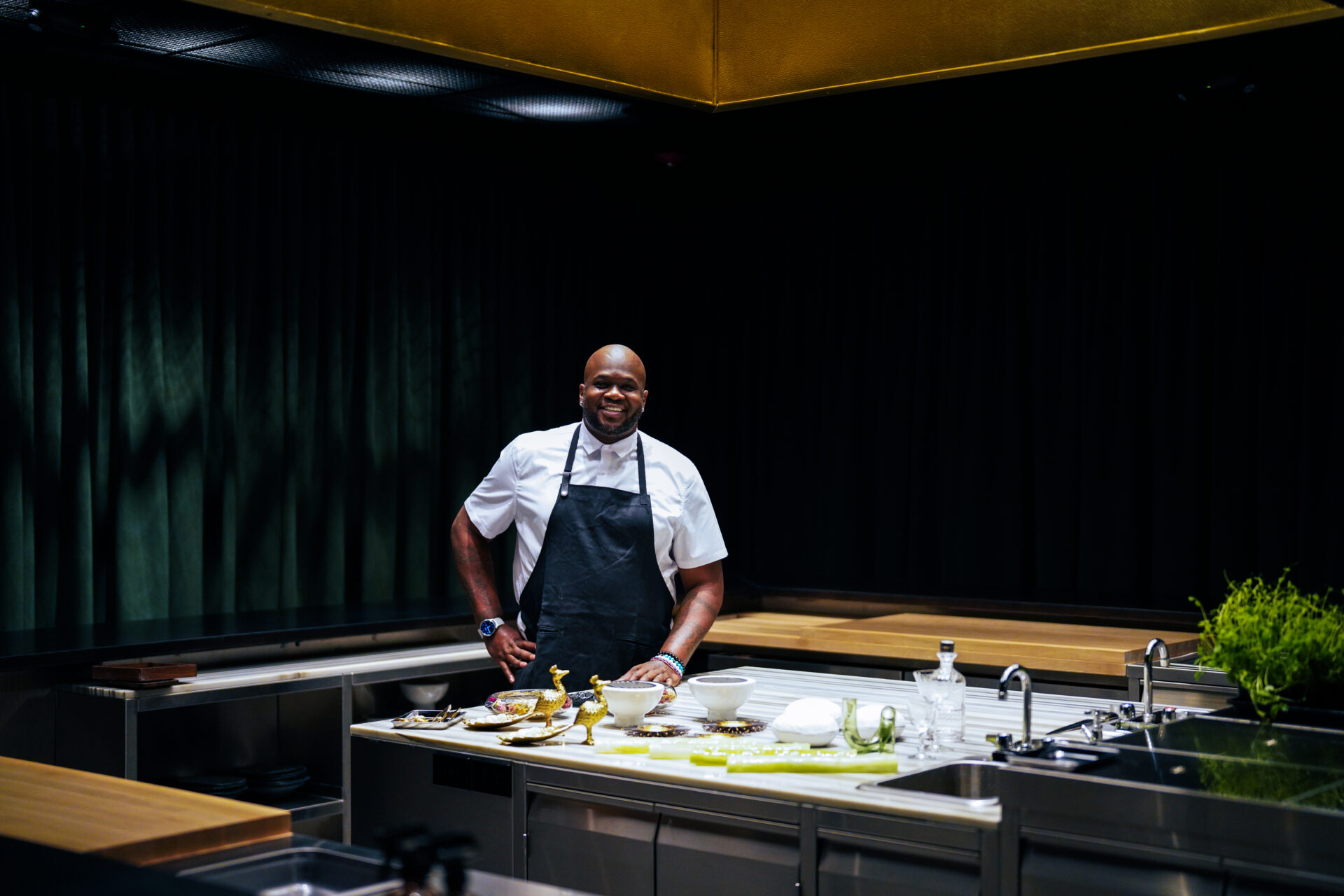
“The commitment to only seasonal and local is at a level few other restaurants achieve,” says Fink. “We only buy spices and herbs from our region, we look for oils from our region, or even change a recipe based upon the seasonality of the secondary or tertiary flavor additions.”For Fink, Pullman isn’t just about the food itself—it’s about shaping a community around better eating. “The best markets are community hubs,” he says. “They empower a community to celebrate with them, to build tradition around them, to eat better because of them. We get to see this every day in Pullman, but the story is just beginning.”
Get the Recipe: Isidore’s 12oz Wagyu Denver Steak

Isidore's Wagyu Denver Steak 
yields
Serves up to 5
3 whole cucumbers
½ cup (100g) fermented green tomato water (see below)
¾ cup (200g) cucumber skin oil (see below)
1 tablespoon kosher salt (or about 1% of cucumber weight)
1½ teaspoons sugar (or about 0.5% of cucumber weight)
4 cups (800g) good quality beef stock (preferably low sodium)
2 cups (400g) dry red wine
3 medium onions, halved
1 tablespoon mesquite flour (or substitute with a pinch of smoked paprika for smoky flavor)
4-5 sprigs fresh thyme (or 1 tsp dried thyme)
Salt, to taste
Sugar, to taste
12 oz Denver Steak (Quanity: as many as you’d like to serve)
Salt
Oil
For the Charred Cucumber
For the Beef & Red Wine Bordelaise Sauce
For the Wagyu Denver Steak
steps
Make the Charred Cucumber
Make the Fermented Green Tomato Water (Advance Prep):
- Quarter green (unripe) tomatoes and place in a clean jar or container.
- Add 3% kosher salt by weight (for example, 30g salt per 1kg tomatoes).
- Cover loosely and ferment at room temperature for 5-7 days.
- Strain the liquid and store in the fridge.
Make the Cucumber Skin Oil:
- Peel the cucumbers and save the skins.
- Place skins in a grill basket or directly on a hot grill until lightly charred.
- Blend charred skins with neutral oil at a 1:3 ratio (1 part skins, 3 parts oil) until fully blended.
- No need to strain — store in the fridge.
Assemble the recipe
- Prep the Cucumbers: Peel cucumbers and cut in half lengthwise. Lay them on a paper towel-lined tray. Sprinkle with kosher salt and sugar. Let sit for at least 1 hour to lightly cure and draw out moisture.
- Grill the Cucumbers: Preheat grill or grill pan to high heat. Char the cut side of the cucumbers until deeply colored (1-2 minutes). Remove and let cool slightly.
- Marinate: Place grilled cucumbers in a bowl or zip-top bag. Pour in the fermented tomato water and cucumber skin oil to coat. Cover and refrigerate for at least 2 hours, preferably overnight, for the best flavor.
- Serve: Slice on a sharp bias into thin planks when ready to serve.
Make the Beef & Red Wine Bordelaise Sauce
- Brûlée the Onions: Heat a dry skillet or grill pan over medium-high heat. Place the halved onions, cut side down, and cook until deeply charred (about 5-8 minutes). Set aside.
- Reduce the Wine & Stock Separately: In a medium pot, simmer the red wine on medium-low heat until reduced by half. In a large pot, simmer the beef stock separately until reduced by half.
- Combine & Reduce Further: Add the reduced wine to the reduced stock in the large pot. Add the charred onions and thyme. Simmer gently for about 20-30 minutes until reduced by about 1/3.
- Strain: Remove from heat. Strain the sauce through a fine mesh strainer into a clean pot or bowl. Press gently on solids to extract flavor.
- Season & Finish: Return the liquid to the pot. Whisk in the mesquite flour (or smoked paprika). Simmer for 5-10 minutes to slightly thicken and develop the smoky flavor. Season with salt and a pinch of sugar to balance acidity.
- Blend (Optional): For a smoother texture, you can blend briefly with a stick blender before serving.
Make the Wagyu Denver Steak
- Prepare the Steak: Take the steak out of the refrigerator and let it sit at room temperature for 30-45 minutes for more even cooking. Pat the steak dry to remove excess moisture, which helps with searing. Season both sides generously with salt.
- Heat the Pan or Grill: For pan-searing, preheat a heavy-bottomed skillet (like cast iron) over high heat until it’s smoking hot. For grilling, preheat your grill to high heat.
- Sear the Steak: Add a bit of high-smoke point oil to the pan or lightly oil your grill grates. Carefully place the steak on the hot surface. Sear for about 2-3 minutes per side.
- Rest the Steak: Remove the steak from the heat and let it rest for 5-10 minutes, either loosely covered with foil or on a cutting board.
- Slice, Serve and Garnish: Slice the steak against the grain for maximum tenderness. Garnish/serve with previously prepared Beef & Red Wine Bordelaise and Charred Cucumber in Fermented Tomato & Cucumber Skin Marinade.
keep reading
On the Road
River City Reawakening | Listen
Explore San Antonio, Texas, with our editor-in-chief: a city that is steeped in American history and a wealth of culinary culture.
Dining Out
The Ultimate Texas Dining Guide 2025 | Listen
They say everything’s bigger and better in Texas, and its dining scene – from the latest cocktail joints to local eateries – is no exception.
Dining Out
Isidore
Isidore pulls from its home state’s surroundings, featuring Texas ingredients, cooking methods, materials, and a Texas wine program.
share
trending content
-
Protected: How to Eat Oysters
by TLP Editors -
9 Cookbooks To Gift This Season
by Erin Byers Murray -
Protected: Embark On an Oyster Experience
-
Protected: 4 Oyster Nonprofits To Know
by Jennifer Stewart Kornegay -
Protected: Why Does Oyster Farming Matter?
by TLP Editors
More From Radar
-
Protected: 15 Essential Southern Oyster Bars
-
Our 10 Favorite Tasting Menus Across the South
-
8 Groundbreaking Asian Fusion Restaurants
-
10 Splurge-Worthy Burgers Across the South | Listen
-
10 Pop-up Restaurants Making Waves this Summer | Listen


